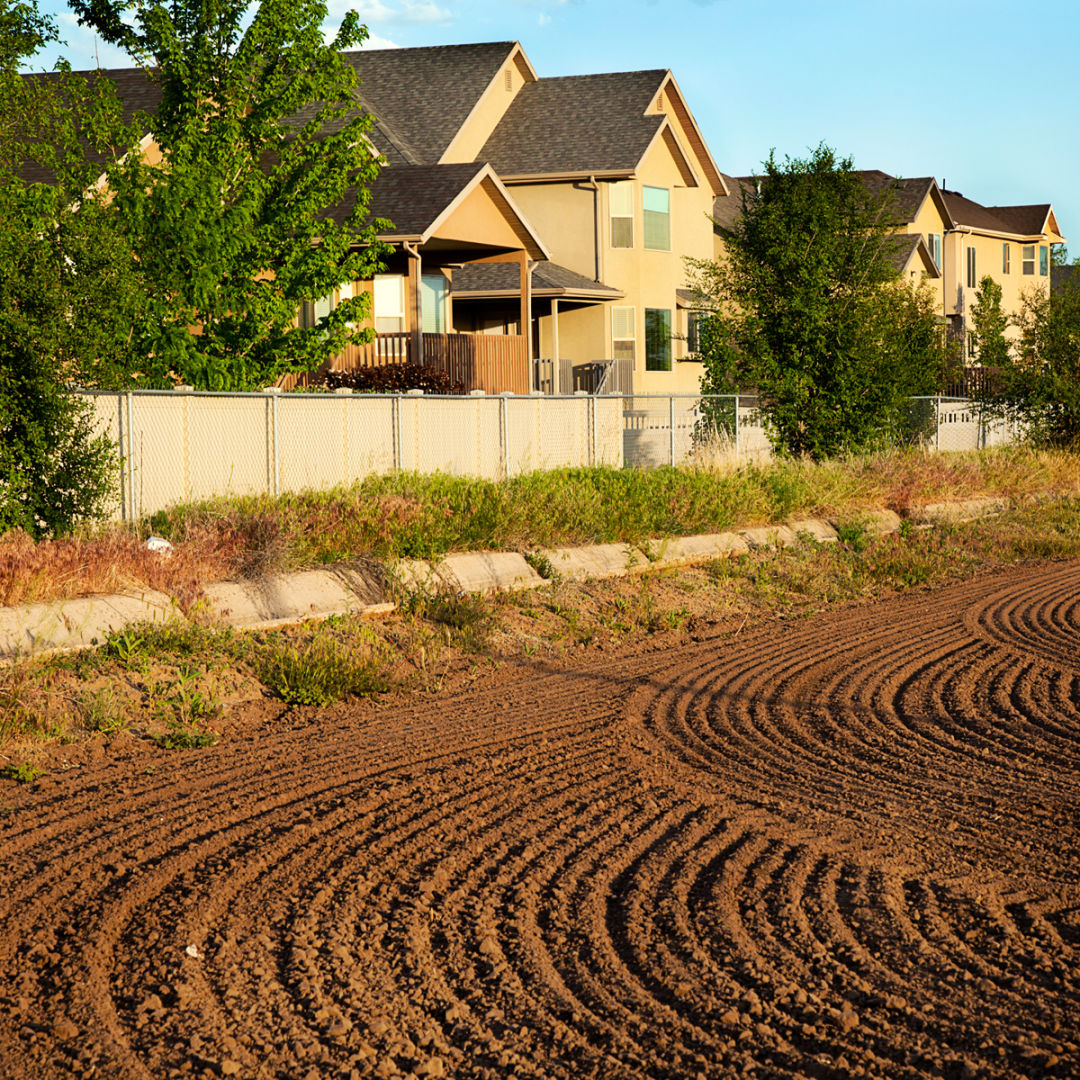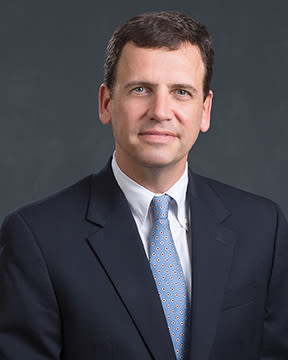Land Use and Property Rights: How to Minimize Controversy

Land Use and Property Rights: How to Minimize Controversy
Land use decisions are perhaps the most publicized and visible actions local governments take. They often culminate in a public hearing before the local government’s board, which may be televised, streamed online, and covered by media.
At the hearing, an applicant asks the board to change a parcel’s future land use designation established by its comprehensive plan (the local government’s long-range plan for growth); change a parcel’s zoning; or approve a specific use or improvements on a parcel. At the hearing, the board will hear from its professional staff, the applicant, and neighboring landowners—all stakeholders who feel strongly about the outcome.
The decision the local government board makes is important. It will shape the course of the community’s growth and development, have an economic impact and political implications, and, most significantly, affect property rights.
Floridians place great importance on protecting property rights. We value land ownership and the ability to use and enjoy our land. In fact, we place so much value on these rights that in Florida, a person is entitled to a 12-person jury in only two types of cases: (i) capital cases—that is, criminal proceedings in which the government seeks to punish the defendant by imposing the death penalty; and (ii) eminent domain cases—condemnation proceedings in which the government seeks to take private property or specific rights in private property. In short, 12 of your peers will be seated in a jury box only if the government is seeking to take your life or take your land. All other cases involve just six-person juries.
It’s no wonder, then, that land use proceedings involve many active participants and stakeholders who ardently seek a specific outcome. These proceedings can result in conferring property rights to an applicant, a decision that neighboring landowners may view as adversely affecting the value of their own land and their ability to use and enjoy it. Emotions can run high as citizens anticipate a decision that has the potential to impact their land, either positively or negatively. More often than not, this is a public process that involves opposing views and results in controversy.
If you are a Florida landowner, you very well may find yourself involved in a land use controversy, whether you initiate an application or are affected by another landowner’s action. Thus, it’s helpful to consider some of the more common practices used in today’s land use application process—practices that help quell controversy and facilitate accord between the affected parties. While our discussion focuses on the legal issues of land use and zoning proceedings in Southwest Florida, such as those conducted by the local governments of Sarasota County, Manatee County, the City of Sarasota, the Town of Longboat Key, the City of North Port, and the City of Venice, among others, these approaches also apply to other cities and counties throughout Florida.

Have a Pre-application Meeting with the Local Government
If you are the party who initiates a land use application, rather than another stakeholder in the process, it is customary for you and your lawyer to meet with the local government’s engineer, chief land planner, utilities director, and other key staff before you embark on a project. More recently, however, local governments have required a pre-application meeting (also known as a pre-application conference) before they will even accept and process a land use application. This meeting includes a representative of every local government department who will eventually review the application when it is filed. This group of department representatives is often referred to as a Development Review Committee (or DRC). If you are considering filing a land use application, then meeting with the DRC allows you to “run the project up the flagpole” with staff, have them identify potential issues, apprise you of certain regulatory requirements that will apply to the project, let you know about other similar projects from which you might glean something helpful, and identify land owners and other stakeholders who may have an interest in the project. This is an invaluable exercise to use in determining whether an application could be controversial with the local government and other stakeholders and, if so, how you might avoid disagreement.
Conduct a Neighborhood Workshop
Many local governments require land use applicants to conduct a neighborhood workshop or meeting as a prerequisite to filing certain land use applications. You will usually provide a notice of this meeting by mailing an invitation to owners of all properties within a certain distance of the parcel that will be the subject of the application, in addition to placing an advertisement in a newspaper of general circulation in the community. The purpose of the meeting is to identify the subject parcel, explain the nature of the land use application that will be filed, explain the proposed project, and solicit questions, comments, and suggestions from attendees. Many local governments have a representative attend the workshop, as well. Minutes of the meeting and, often, an audio recording are required as part of the application materials.
While you’re typically only required to have one meeting, it’s not uncommon to have a second, voluntary meeting to make sure all interested parties are aware of new information and any changes made to the project. Further, you may also hold smaller, separate meetings with the leadership of homeowners’ associations and individual residents.
Some local governments have taken the workshop requirement a step further for certain types of land use applications by requiring “charrettes.” Charrettes are collaborative planning or design sessions at which residents and stakeholders actively participate in the design of the project. While we most often see this in projects initiated by the local governments, charrettes may be used for privately initiated projects that are particularly controversial.
A neighborhood workshop helps to determine whether a project will be controversial. You and your attorney will probably leave it with a list of issues that need further review and the names of neighbors with whom you’ll need to follow up before filing the land use application.
Build a Solid Case with the Expertise of Professional Consultants
For more complex or particularly controversial land use applications, in addition to an attorney, it may be necessary to engage a consultant to examine a specific element or elements of a project you know or anticipate will likely be a point of contention. This might include having an environmental consultant to prepare a survey to determine whether the project will affect protected native habitat; a land planner to design a landscape buffer along the project boundary to visually screen the project; a traffic planner to determine the impact the project’s traffic will have on the roadway network; a civil engineer to analyze whether the project will affect stormwater drainage in the area; or a sound engineer to study whether a proposed development will cause excessive noise.
Once you engage them, these consultants will gather facts, apply their knowledge, experience, and the principles of their disciplines, and provide analysis framing the actual impact the project feature will have on the surrounding area or community. This may be starkly different from the perceived impact that concerned neighbors or the local government may express. Furthermore, if there is the potential for an adverse impact, the consultant will craft a plan or recommend design changes to the project to address or mitigate it. When respected consultants provide a thorough and thoughtful assessment of a project’s impact, it frequently helps eliminate or address concerns at the heart of the controversy.
Expanded Notification Requirements for Applications and Land Use Public Hearings
To ensure that all stakeholders are fully aware of proposed land use decisions—and to strive to provide a thorough vetting of the application—notices of the public hearings at which your application will be considered are mailed and advertised, just as they are for the neighborhood workshop. Local governments often require the additional step of posting a conspicuous sign or signs on the subject property’s street frontage. This alerts virtually every conceivable party who might have an interest in a land use decision: those who own land in proximity to the property, those who read the community’s newspaper, and those who merely drive, walk, or bike past the property.
In addition, abundant information regarding the proposed land use application is readily available to stakeholders. Florida is well-known for its “Government-in-the-Sunshine” laws, which include a broad public records law requiring that documents, including land use applications, be available for anyone to review. And many local governments make the land use applications and the information filed to support them available online. This ensures the process is transparent, with everyone having access to the same information.
Regulations Designed to Achieve Project Quality and Compatibility
Local governments’ land development and zoning regulations are generally thorough and impose design requirements on virtually every element of a project. By and large, these detailed regulations provide the applicant and other stakeholders in the land use process with greater certainty regarding the project’s outcome.
Many of today’s regulations are a product of yesterday’s “bad” development, such as projects built before stormwater drainage systems were required, before landscape buffers and other minimum tree-planting requirements were in place, and before detailed commercial sign regulations were adopted. For example, the Sarasota County Comprehensive Plan, that government’s long-range planning document adopted in the 1980s, requires that potential incompatibilities between land uses due to the density (i.e., the number of homes per acre), intensity (e.g., a more “intense” 500,000-square-foot big-box commercial center versus a less “intense” 50,000-square-foot neighborhood commercial center), or the type of use proposed shall be mitigated through site and architectural design techniques, including adding open space and landscaping to a project, screening sources of light and noise, limiting building height, and requiring that buildings be set back greater distances from the project boundary, among other things. These requirements are fleshed out in greater detail within the county’s Land Development Regulations and Zoning Regulations and avoid controversy over a land development application and help the parties reach accord.
The Role of Public Hearings, How They Are Conducted, and Possible Outcomes
The decision of the local government board is much simpler if all affected parties are in agreement and there is wide support for the project. However, this doesn’t always occur. There will always be those projects that culminate in public hearings attended by a busload of neighboring residents wearing matching T-shirts emblazoned with a catchy phrase that summarizes their complete and total disdain for the proposed land use application. You cannot make all of the people happy all of the time.
Even with lots of planning and advance meetings, it’s not always possible to persuade all stakeholders to agree on a project. When that happens, your goal is simply to demonstrate that the application is consistent with the local government’s comprehensive plan and complies with the applicable land development regulations and zoning regulations. A good attorney will go a step further and help you show that, although there may be opposition, the land use applicant has demonstrated good faith by working closely with the local government’s professional staff in refining the project, dealt fairly with all stakeholders, and sought to reasonably address the concerns of the project opponents.
Ultimately, the local government’s board must decide whether to approve the application, deny the application, or approve the application with conditions—conditions designed to further refine the project and make the outcome less controversial.
Mediating a Land Use Action: Florida Land Use and Environmental Dispute Resolution Act
In 1995, the State of Florida adopted the Florida Land Use and Environmental Dispute Resolution Act, which provides a voluntary alternative to challenging an approval or denial of a land use application through litigation. Parties have long had the ability to challenge a land use decision by seeking relief in Circuit Court or administrative tribunals. However, this act provides a unique and very practical method for resolving a controversial land use decision. It creates a framework for the local government, the land use applicant, and other stakeholders to continue seeking a resolution to a land use decision outside the sometimes-heated atmosphere of a public hearing.
Conclusion
Florida recently became the third most populous state, adding an average of 800 people per day in 2014. The weather, natural environment, low cost of living, cultural offerings, and the many other reasons we make this our home will continue to draw others to the Sunshine State. We can be certain that our community will necessarily consider and discuss important land use decisions, setting the course for our growth and preserving the quality of life we enjoy. These decisions naturally stir emotion among our engaged and educated stakeholders, often leading to controversy. Fortunately, our process for obtaining land use and development approvals includes several features that help improve the quality of the discourse, moderate and calm disagreement, and, in the end, minimize controversy.

Charles D. Bailey III is a Williams Parker shareholder. As a land use attorney, he counsels developers and significant landowners on a variety of land use matters, including developments of regional impact, comprehensive plan amendments, re-zonings, special exceptions, conditional use approvals, site plan approvals, variances, and development agreements addressing concurrency issues. Prior to joining the firm, Charlie worked as an assistant county attorney representing Sarasota’s Board of County Commissioners with respect to zoning, land use, eminent domain, and administrative law matters.
More about Charles D. Bailey III
About Williams Parker
The law firm of Williams Parker was founded in 1925. We focus on employers, developers, high net worth families, and nonprofits. The firm serves clients wherever their legal needs arise. We have one of Florida’s largest trusts and estates practices; tax and employment groups with significant depth; and accomplished real estate, litigation, and corporate practices.



